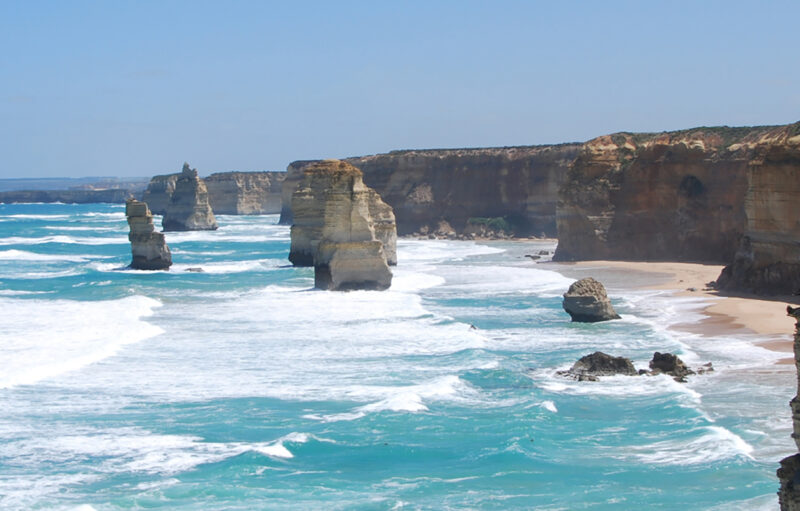PARK WATCH Article December 2025 |
Victoria’s precious roadside grasslands are being destroyed at an alarming rate, reports Dr Adrian Marshall, Facilitator, Grassy Plains Network
Our grasslands are the victims of poor management, inadequate enforcement and systemic failures across multiple levels of government and industry. With only 0.5% of original habitat remaining from the Yarra River/Birrarung to Portland, every fragment destroyed represents a step toward ecological collapse.
Death by a thousand cuts
Recent incidents paint a stark picture of ongoing damage. In May, Moyne Shire cleared 3.5 km of roadside grassland along Castle Carey Road, a crime against nature that highlights the broader crisis. Just weeks earlier, Powercor faced responsibility for 32 separate instances of roadside damage.
Last year alone, 10 km of the Wimmera’s finest roadside grassland was cropped for wheat in what can only be described as industrial-scale habitat destruction.
This destruction continues through stock damage, unauthorised clearing, and countless smaller incidents that collectively represent death by a thousand cuts for these irreplaceable habitats.
Roadside grassland conservation exists within a web of competing priorities and legitimate infrastructure needs. Roads require maintenance, utility companies must service their assets, the CFA need firebreaks, and emergency vehicle access can’t be compromised. Wildlife strike prevention and fire risk reduction add additional management pressures.
The key lies not in eliminating these activities but in making sure all stakeholders understand their roles, responsibilities, and the conservation values at stake.
Problem of recognition
A fundamental challenge lies in grassland identification. In Winter, after burning, or in wet conditions dominated by pasture grasses, valuable native grasslands can be difficult to detect by the untrained eye. This invisibility, combined with absent or inadequate signage, creates a dangerous assumption that nothing of value is present.
Communication breakdowns compound the problem. Council biodiversity officers may know grassland exists, but this knowledge remains siloed unless systematic consultation occurs. Every worker operating near potential grassland habitat requires education about identification and clear protocols for seeking expert assistance when in doubt.
The insidious nature of grassland damage makes matters worse. Vehicle tracks may appear minor but create destruction through soil compaction, plant mortality, and weed invasion pathways.
With state and federal funding, the Linear Reserves Project has made significant progress in surveying roadside conservation values, and making crucial information publicly accessible through the VVP Linear Reserves Planning Portal. However, substantial geographic gaps remain, rapid assessments provide only general guidance rather than definitive conservation status, and data centralisation requires ongoing work and funding.
Comprehensive mapping of roadside conservation values is essential for effective protection strategies.
More carrots, more sticks
Current enforcement mechanisms are demonstrably inadequate. Local governments lack sufficient resourcing to fulfil their responsibilities effectively.
Perhaps most concerning is the widespread disregard for smaller offences, despite their cumulative impact. The resulting despair among conservationists, who increasingly abandon reporting minor incidents, signals system failure.
State government must assume greater responsibility for these statewide problems. Education programs require expansion, and structural organisational changes are necessary to prevent institutional memory loss that perpetuates destructive practices.
The current system relies too heavily on punishment while ignoring positive incentives. Landholders who protect adjacent roadsides deserve recognition and rewards. Councils demonstrating improved compliance should receive increased funding. Commercial contracts should favour organisations with a demonstrated ability for nature planning and good track record.
These ‘carrots’ represent untapped potential for voluntary conservation improvements.
The grazing dilemma
Roadside grazing regulation presents particular challenges. When conducted responsibly, grazing of roadside grasslands can provide mutual benefits through fire risk reduction and stock feed provision, particularly where native grassland is absent or can tolerate careful management.
However, excessive stocking rates and stock access to quality grasslands during Spring, in wet conditions or for extended periods causes permanent damage. Regional cumulative impacts can be severe.
Permits should be mandatory for all roadside grazing, with conditions reflecting the nuanced relationship between grazing impacts and benefits. Permit compliance requires consistent enforcement. While drought conditions and farmer hardship demand compassionate consideration, precious grasslands cannot be sacrificed when alternatives exist.
Expanded education efforts must reach farmers outside traditional Landcare networks, potentially through major industry organisations like Wool Industries Australia.
Restoration is non-negotiable
Every instance of grassland damage should trigger requirements for high-standard restoration involving seed-based, high diversity plantings with multi-year weed control and monitoring protocols. Currently, native seed shortages hamper quality restoration efforts.
Linking damage incidents to restoration industry development could generate substantial economic and ecological benefits. Seed-based restoration represents an emerging regional economy whose time has come.
We need a Grassland Czar
Statewide coordination is essential to address behaviours destroying habitat on the brink of extinction. Business as usual has failed. Effective action requires an organisation with enforcement authority and educational capacity capable of delivering real on-ground improvements. This includes proactive policy development, strategic regulation, and regional solutions engaging local communities.
The Office of the Conservation Regulator (OCR) represents an obvious candidate to lead this effort, but requires additional resources and potentially enhanced powers. The ‘enforceable undertaking’ imposed on Powercor by the OCR demonstrates one element of effective intervention, but comprehensive change demands dedicated teams focused on the broader challenge and substantial resource commitments.
Roadside grassland conservation represents more than protecting nature — it’s about safeguarding the last fragments of habitats that once defined our landscape. With only 0.5% remaining, we can’t afford continued destruction through preventable damage, inadequate management, and systemic failures.
The solution requires coordinated action across government, industry, and community. We need better education, stronger enforcement, positive incentives, comprehensive mapping, and dedicated leadership. Most importantly, we need recognition that these grasslands represent irreplaceable natural heritage deserving protection equal to any other critical infrastructure.
The question is not whether we can afford to act, but whether we can afford not to. Our grasslands are counting on us to get this right.
- Read the latest full edition of Park Watch magazine
- Subscribe to keep up-to-date about this and other nature issues in Victoria
- Become a member to receive Park Watch magazine in print
